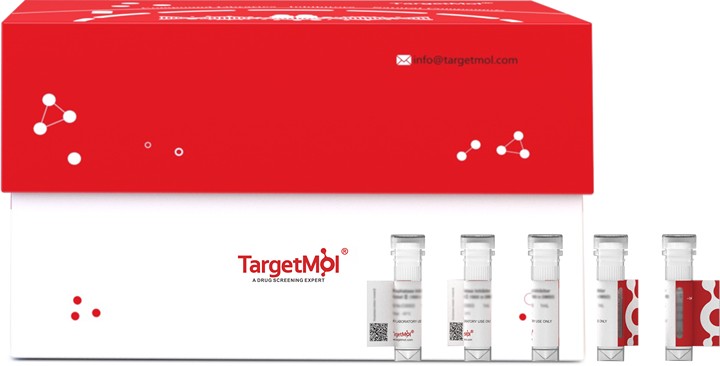
Pentraxin 3 Protein, Human, Recombinant (His)
TMPY-01816
Molecular Weight41.6 kDa (predicted); 43-47 kDa. (reducing conditions)
Product group Chemicals
Overview
- SupplierTargetMol Chemicals
- Product NamePentraxin 3 Protein, Human, Recombinant (His)
- Delivery Days Customer16
- CertificationResearch Use Only
- Molecular Weight41.6 kDa (predicted); 43-47 kDa. (reducing conditions)
- Scientific DescriptionPentraxin-related protein PTX3, also known as Tumor necrosis factor alpha-induced protein 5, Tumor necrosis factor-inducible gene 14 protein, TSG-14, PTX3 and TNFAIP5, is a secreted protein that contains one pentaxin domain. PTX3 plays a role in the regulation of innate resistance to pathogens, inflammatory reactions, possibly clearance of self-components and female fertility. Pentraxins are a family of evolutionarily conserved multifunctional pattern-recognition proteins characterized by a cyclic multimeric structure. Based on the primary structure of the subunit, the pentraxins are divided into two groups: short pentraxins and long pentraxins. C-reactive protein (CRP) and serum amyloid P-component (SAP) are the two short pentraxins. The prototype protein of the long pentraxin group is pentraxin 3 (PTX3). CRP and SAP are produced primarily in the liver in response to IL-6, while PTX3 is produced by a variety of tissues and cells and in particular by innate immunity cells in response to proinflammatory signals and Toll-like receptor (TLR) engagement. PTX3 is essential in female fertility by acting as a nodal point for the assembly of the cumulus oophorus hyaluronan-rich extracellular matrix. PTX3 interacts with several ligands, including growth factors, extracellular matrix components and selected pathogens, playing a role in complement activation and facilitating pathogen recognition by phagocytes, acting as a predecessor of antibodies. PTX3 may also contribute to the pathogenesis of atherosclerosis.
- Storage Instruction-20°C
- UNSPSC12352200
